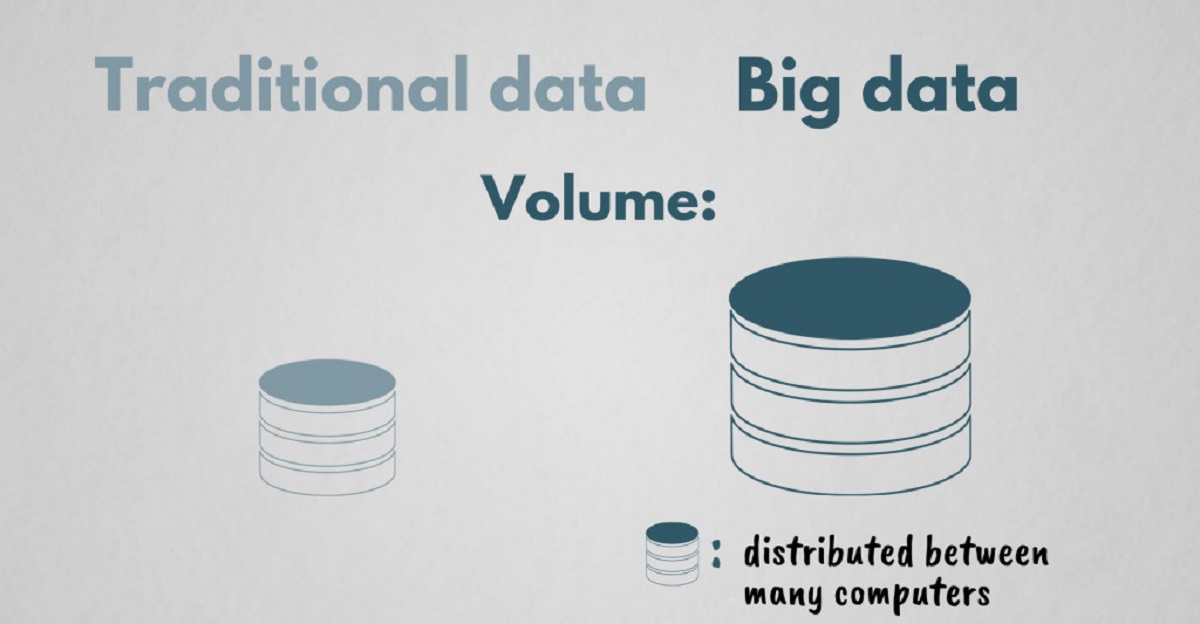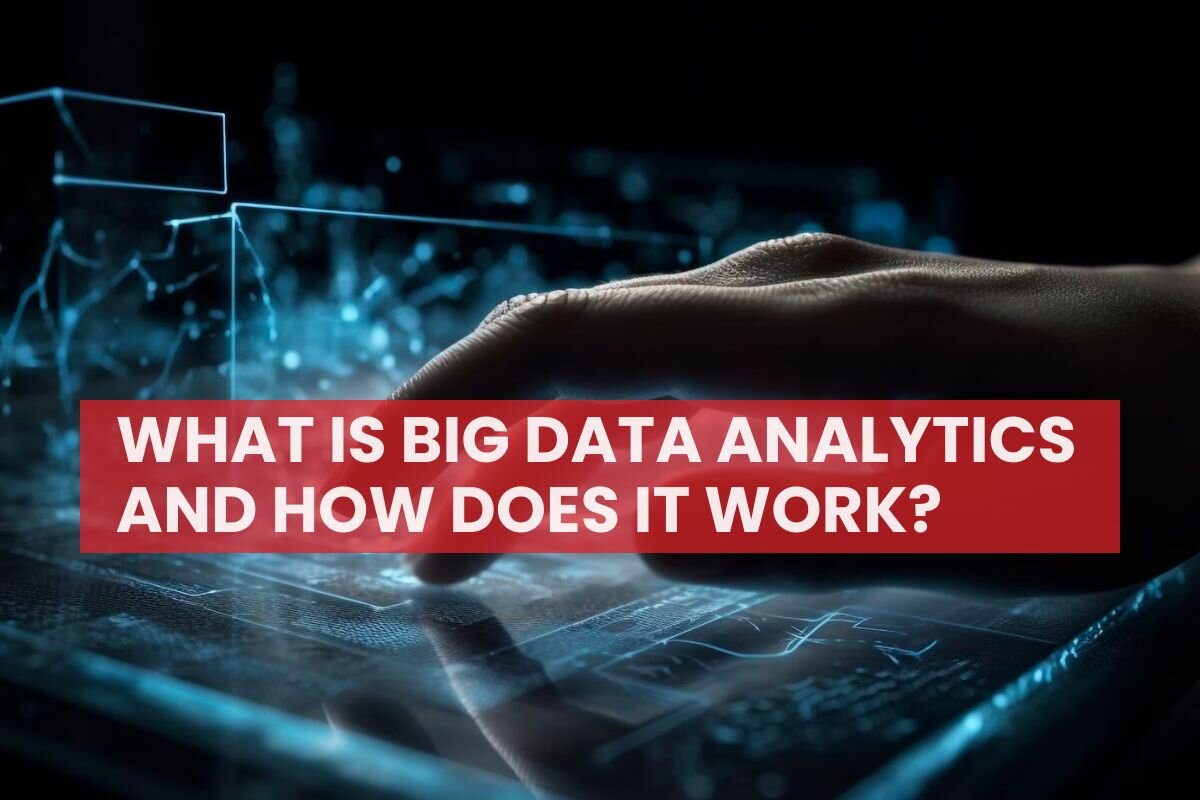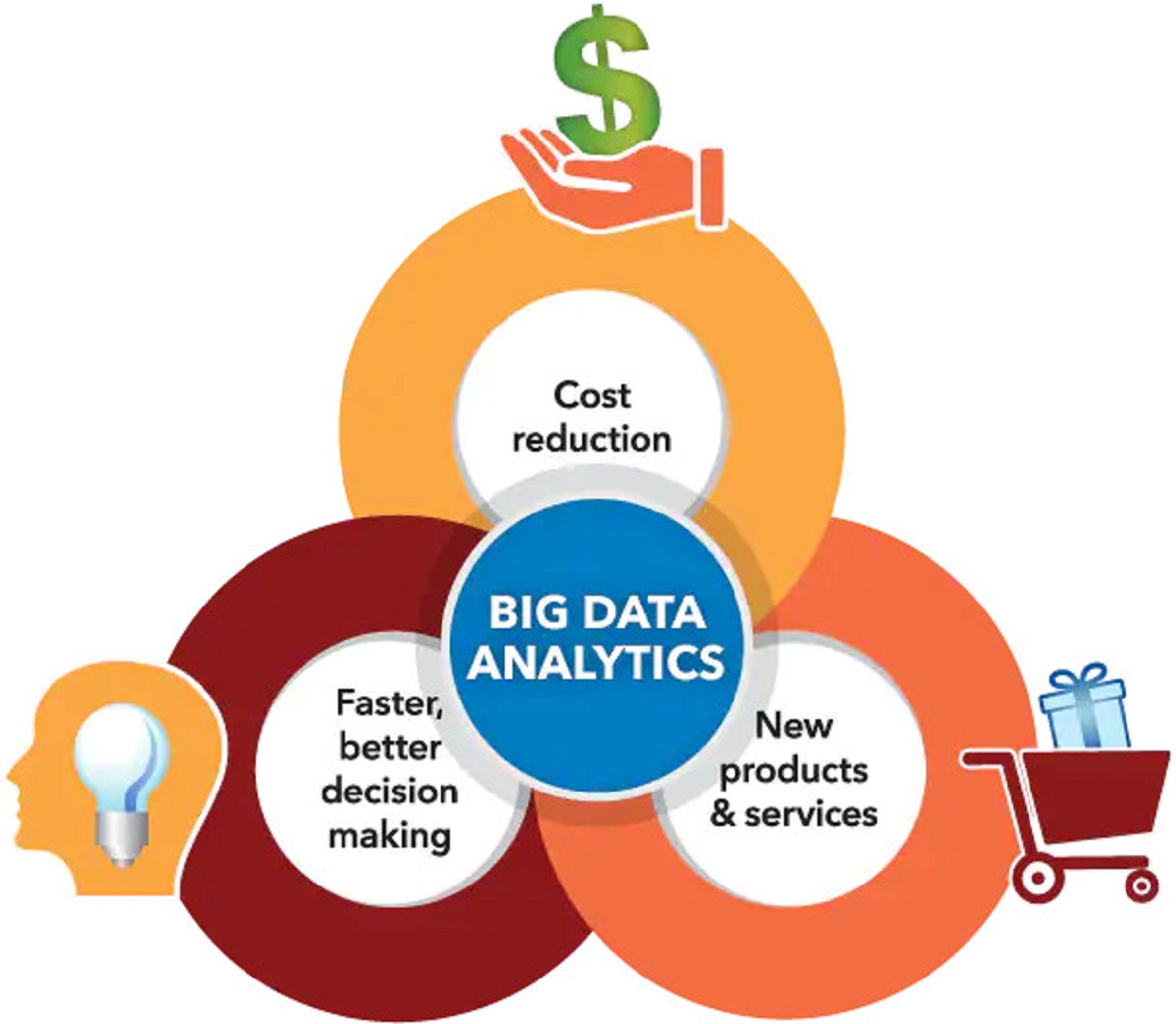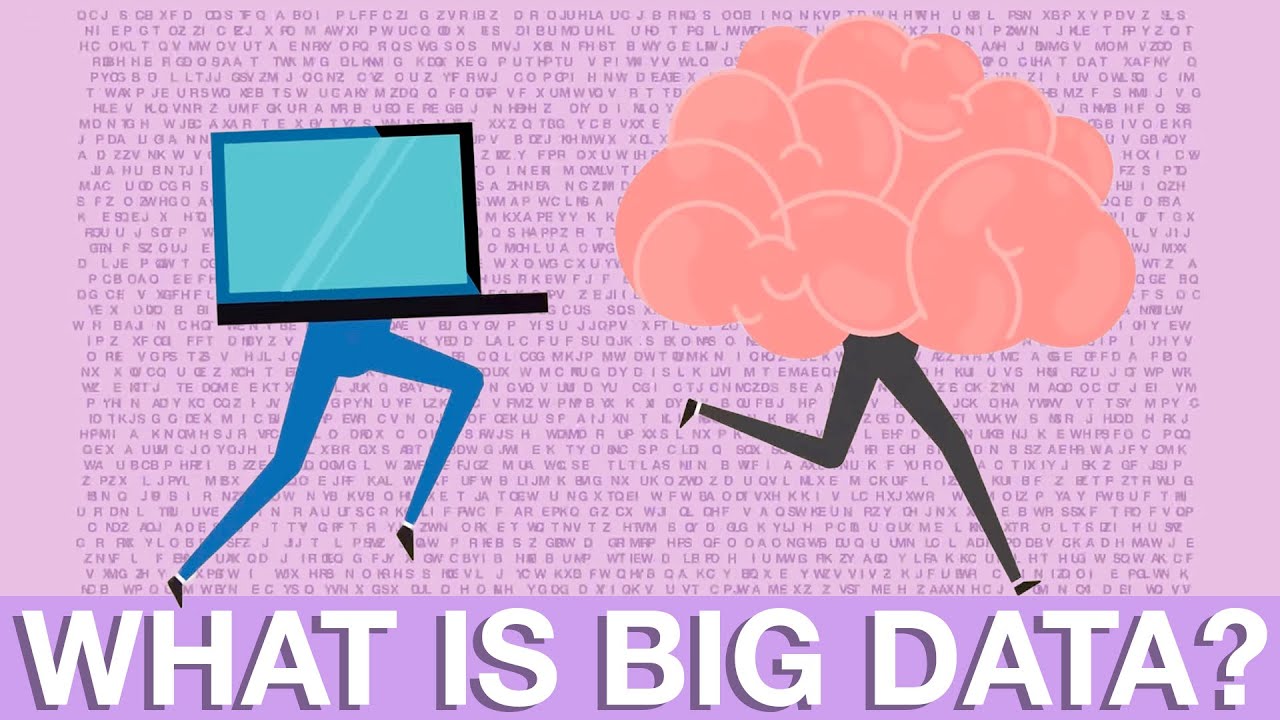Introduction
Welcome to the fascinating world of big data and its processing. In today’s digital age, the amount of data being generated and collected is growing exponentially. This exponential growth has given rise to the concept of big data – large, complex datasets that are difficult to process using traditional database management tools.
Big data encompasses various types of data, including structured data that can be stored in rows and columns, as well as unstructured data such as social media posts, images, videos, and sensor data. This immense volume of data requires specialized techniques and tools to collect, store, manage, process, and analyze it effectively.
The processing of big data involves several stages, each serving a specific purpose to extract meaningful insights from the vast amount of information. This article will delve into the process of big data processing, exploring the various techniques and steps involved.
By understanding the intricacies of big data processing, organizations can unlock the hidden potential within their vast data repositories and gain valuable insights to make informed business decisions.
So, let’s embark on this journey of exploring how big data is processed and make sense of the immense possibilities it holds.
Defining Big Data
Before delving into the intricacies of big data processing, it is crucial to have a clear understanding of what big data actually is. Big data refers to extremely large and complex datasets that cannot be effectively managed, processed, or analyzed using traditional data processing techniques.
There are three primary characteristics that define big data, often referred to as the Three V’s: volume, velocity, and variety.
Volume: Big data deals with an enormous volume of data. This includes structured data, like transaction records and customer details, as well as unstructured data, such as social media posts and sensor data. The volume of data being generated is growing at an unprecedented rate, requiring robust processing techniques.
Velocity: Another defining characteristic of big data is its velocity. Data is generated and collected in real-time at a rapid pace, demanding efficient processing and analysis to keep up with the flow of incoming data. Examples of high-velocity data include stock market transactions, online shopping activities, and social media interactions.
Variety: Big data encompasses different types of data, including structured, semi-structured, and unstructured data. This variety adds complexity to the processing and analysis of big data. Traditional databases are designed to handle structured data, but big data processing requires techniques to manage unstructured and semi-structured data like images, videos, and text from various sources.
In addition to the Three V’s, there is also a fourth characteristic that is becoming increasingly important in the field of big data: veracity. Veracity refers to the quality and reliability of the data. Big data often contains data from various sources, with varying levels of accuracy and consistency. Therefore, data cleansing and validation procedures are essential to ensure the reliability of the insights derived from big data.
Now that we have a clear definition of big data and its key characteristics, let’s explore the process of collecting, storing, and managing these vast datasets in the next section.
The Process of Data Collection
Data collection is the crucial first step in the big data processing journey. It involves gathering data from various sources, both internal and external to an organization. This diverse range of sources includes transactional databases, social media platforms, IoT devices, sensors, mobile apps, and more.
The process of data collection can be summarized into the following steps:
- Determining data requirements: Organizations need to identify the specific data they require to achieve their objectives. This includes defining the type of data, its format, and the sources from which it will be collected.
- Identifying data sources: Next, organizations need to identify the sources from which the required data can be collected. This involves assessing both internal data sources, such as customer databases and sales records, as well as external sources like social media platforms, public datasets, and third-party data providers.
- Data extraction: Once the data sources are identified, the actual process of collecting the data begins. This typically involves using various techniques, such as web scraping, API integration, or data pipelines to extract data from different sources.
- Data validation: After extraction, the collected data undergoes a validation process to ensure its accuracy, completeness, and consistency. This involves checking for any anomalies, missing values, or inconsistencies that may affect the quality of the data.
- Data integration: In this step, the collected data is integrated into a centralized repository or data warehouse. This helps to consolidate and organize the data, making it easily accessible for further processing and analysis.
It is important to note that the process of data collection should comply with privacy and data protection regulations. Organizations need to ensure that they have the necessary permissions and consent to collect and use the data, while also taking appropriate measures to protect the privacy and confidentiality of the collected data.
By following a systematic and well-defined data collection process, organizations can gather the necessary data for their big data processing initiatives. In the next section, we will explore the crucial step of data storage and management in the journey of big data processing.
Data Storage and Management
Once data is collected, the next step in the big data processing journey is to store and manage it effectively. Big data storage and management involve handling large volumes of data, ensuring data security, and optimizing data accessibility for further processing and analysis.
There are several methods and technologies utilized in big data storage and management:
- Distributed File Systems: Distributed file systems like Hadoop Distributed File System (HDFS) and Amazon S3 provide scalable and fault-tolerant storage solutions for big data. These systems distribute data across multiple nodes, allowing for parallel processing and efficient storage.
- Data Warehousing: Data warehousing involves consolidating and organizing data from various sources into a centralized repository. This facilitates easy retrieval and analysis of data. Traditional data warehousing solutions like Oracle Data Warehouse and modern cloud-based solutions like Snowflake are commonly used.
- Data Lakes: Data lakes are storage repositories that contain raw, unprocessed data in its native format. In contrast to data warehouses, data lakes offer more flexibility, allowing data to be ingested and stored without upfront structuring. Technologies like Apache Hadoop and Amazon S3 are commonly used for implementing data lakes.
- NoSQL Databases: NoSQL databases like MongoDB, Cassandra, and Redis are utilized for handling unstructured and semi-structured data. These databases offer horizontal scalability and flexible data models, making them well-suited for storing and managing big data.
Effective data management in big data processing also involves ensuring data security and privacy. Organizations need to implement robust security measures, including access controls, encryption techniques, and regular security audits to protect the integrity and confidentiality of the stored data.
Data management processes also include data governance, which involves defining data policies, standards, and procedures for ensuring data quality, consistency, and compliance. Data governance frameworks help organizations maintain data integrity and enable effective utilization of the stored data for analysis and decision-making.
In summary, effective data storage and management are critical components of the big data processing journey. By leveraging appropriate storage technologies and implementing robust data management practices, organizations can ensure the accessibility, security, and integrity of their big data repositories.
Data Processing Techniques
Data processing is a critical phase in the big data journey, where raw data is transformed into actionable insights. This phase involves various techniques and methodologies to clean, integrate, transform, and analyze the collected data.
Let’s explore some of the commonly used data processing techniques:
- Data Cleansing: Data cleansing, also known as data scrubbing, involves identifying and correcting any errors, inconsistencies, or anomalies present in the collected data. This process helps improve data quality and ensures that accurate and reliable insights are derived from the data.
- Data Integration: Data integration involves combining data from multiple sources into a single unified dataset. This process helps in eliminating data silos and enabling comprehensive analysis by providing a holistic view of the data.
- Data Transformation: Data transformation involves converting the collected data into a format suitable for analysis. This may include aggregating data, applying mathematical or statistical operations, normalizing data, or converting data into a standardized format.
- Data Enrichment: Data enrichment involves enhancing the collected data with additional attributes or information to gain deeper insights. This can be done by appending data from external sources, conducting sentiment analysis, or adding geographic information, among other techniques.
- Data Mining: Data mining techniques are used to uncover patterns, relationships, or insights from large datasets. This involves applying statistical algorithms, machine learning techniques, and artificial intelligence to identify hidden patterns or make predictions.
- Machine Learning: Machine learning algorithms enable computers to automatically learn from the data and make predictions or decisions without explicit programming. This technique is widely used in big data processing to uncover patterns and predictions from large datasets.
These data processing techniques play a crucial role in transforming raw data into valuable insights and actionable intelligence. By applying these techniques, organizations can derive meaningful patterns, trends, and insights from their big data repositories.
Next, we will explore the importance of data cleansing in the big data processing journey, and how it helps ensure data quality for accurate analysis and decision-making.
Data Cleansing
Data cleansing, also known as data scrubbing or data cleaning, is a crucial step in the big data processing journey. It involves identifying and rectifying errors, inconsistencies, or inaccuracies present in the collected data. Data cleansing is necessary to ensure data quality, which in turn facilitates accurate analysis and decision-making.
There are several common issues that data cleansing aims to address:
- Missing Values: Missing data can occur when certain fields or attributes are not populated for some records. These missing values can lead to biased insights or skew the analysis. Data cleansing techniques can help handle missing values by imputing or removing them based on appropriate strategies.
- Incorrect Values: Incorrect values can arise due to human errors during data entry or other data collection processes. For example, a typo in a customer’s age or an incorrect phone number can distort the data. Data cleansing techniques can identify and correct such errors, ensuring accurate and reliable data.
- Inconsistent Format: Inconsistent data formats can pose challenges in data processing. For instance, dates in different formats, currencies with varying symbols, or phone numbers with different conventions can hinder effective data analysis. Data cleansing techniques can standardize the data formats, making it easier to process and analyze.
- Duplicate Entries: Duplicate entries occur when the same data is recorded multiple times in the dataset. This redundancy can skew the analysis and inflate results. Data cleansing techniques can identify and remove duplicate entries, ensuring that each data point is counted only once.
- Outliers: Outliers are data points that deviate significantly from the normal range or distribution. These outliers can distort statistical analysis or lead to misleading insights. Data cleansing techniques can help detect and handle outliers appropriately, either by removing them or treating them separately.
Effective data cleansing involves a combination of automated techniques and manual inspection to detect and rectify these data issues. Automated tools and algorithms can be used to identify missing values, inconsistent formats, and outliers, while manual intervention may be required to resolve more complex issues.
Data cleansing is an iterative process that often requires continuous monitoring and refinement. As more data is collected or as new data sources are integrated, the cleansing process needs to be revisited to ensure data quality remains intact.
By performing data cleansing, organizations can enhance the accuracy, reliability, and usefulness of their data for subsequent analysis and decision-making. It lays the foundation for extracting meaningful insights and maximizing the value of big data.
Data Integration
Data integration plays a vital role in the big data processing journey by combining data from various sources into a unified dataset. It involves the process of merging, consolidating, and harmonizing data from different systems or databases to provide a comprehensive view of the data for analysis.
The main objective of data integration is to eliminate data silos and enable a holistic understanding of the collected data. By integrating diverse datasets, organizations can gain deeper insights and make more informed decisions. Here are some key aspects of data integration:
- Data Source Identification: The first step in data integration is identifying the relevant data sources. These can include structured data from databases, semi-structured data from XML or JSON files, or unstructured data from sources like social media or sensor data.
- Data Mapping: Once the data sources are identified, data mapping is performed to establish relationships and connections between the data elements. This involves matching fields from different sources to ensure that they are properly aligned during the integration process.
- Data Transformation: Data transformation may be required to ensure consistency and compatibility between the integrated datasets. This can involve standardizing data formats, converting units of measurement, or resolving any discrepancies that arise during the mapping phase.
- Data Consolidation: In this phase, data from different sources is combined into a centralized repository or data warehouse. This consolidation helps create a unified and comprehensive dataset for further analysis.
- Data Quality Assurance: As part of the integration process, data quality assurance techniques are employed to ensure the accuracy, completeness, and consistency of the integrated dataset. This includes validating data against predefined rules, performing data profiling, and implementing data cleansing techniques to address any quality issues.
Data integration can be a complex and ongoing process, especially when dealing with large volumes of data or a high number of data sources. It requires careful planning, robust data governance practices, and the use of appropriate tools and technologies.
With effective data integration, organizations can break down data silos, gain a comprehensive view of their data, and unlock valuable insights. It enables a deeper understanding of customer behavior, market trends, and business operations, empowering organizations to make data-driven decisions.
In the next section, we will explore the significance of data transformation in the big data processing journey.
Data Transformation
Data transformation is a crucial step in the big data processing journey that involves converting and standardizing data into a format suitable for analysis. It encompasses various techniques to manipulate, cleanse, and restructure the collected data to uncover meaningful insights and facilitate decision-making.
Here are some key aspects of data transformation:
- Data Cleaning: Data cleaning, also known as data scrubbing, is an integral part of data transformation. It involves identifying and rectifying errors, inconsistencies, or inaccuracies in the data. By removing or correcting these issues, data quality is improved and reliable insights can be derived.
- Data Aggregation: Data aggregation involves combining multiple data points into a summary or broader category. This process helps reduce data volume, simplify analysis, and reveal higher-level trends or patterns.
- Data Normalization: Data normalization is the process of organizing data into a standardized format. This allows for consistency in data representation and ensures accurate comparisons and analysis. Normalization techniques may include standardizing units of measurement, normalizing dates, or scaling numerical values.
- Data Encoding: Data encoding involves converting data into a specific format or representation. This is often necessary for processing different types of data, such as encoding text using specific character encodings or converting categorical variables into numerical values for analysis.
- Data Feature Engineering: Feature engineering refers to creating new derived features from existing data variables. This process involves applying domain knowledge and statistical techniques to extract meaningful insights and improve the performance of machine learning models.
- Data Sampling: Data sampling involves selecting a subset of data to represent the entire dataset. This can help reduce computational complexity, improve efficiency, and enable faster processing, especially when dealing with large volumes of data.
Data transformation techniques can be applied using a variety of tools and programming languages, depending on the specific needs and requirements of the data processing task. These techniques help prepare the data for analysis, making it easier to identify patterns, trends, and correlations that might not be apparent in the raw data.
It is important to note that data transformation is often an iterative process, as insights gained from initial analysis may lead to further refinement or adjustments in the transformation techniques applied. Regular evaluation and validation of the transformed data are necessary to ensure its accuracy and relevancy throughout the processing journey.
By effectively transforming the data, organizations can uncover valuable insights, make informed decisions, and derive maximum value from their big data repositories. Next, we will explore the process of data analysis in the big data processing journey.
Data Analysis
Data analysis is a crucial stage in the big data processing journey where insights and patterns are extracted from the collected and transformed data. It involves applying statistical techniques, machine learning algorithms, and visualization tools to uncover meaningful insights, make data-driven decisions, and gain a competitive edge.
Here are some key aspects of data analysis:
- Descriptive Analysis: Descriptive analysis focuses on summarizing and describing the characteristics of the data. This includes computing basic statistical measures such as mean, median, and standard deviation, as well as generating visualizations like histograms, pie charts, and scatter plots to gain a better understanding of the data.
- Diagnostic Analysis: Diagnostic analysis aims to identify the root causes of specific events or outcomes. It involves exploring relationships, dependencies, and correlations in the data to uncover patterns or anomalies that may explain certain observations.
- Predictive Analysis: Predictive analysis leverages statistical modeling and machine learning algorithms to make predictions and forecast future trends. By capturing historical patterns and relationships in the data, predictive analysis helps organizations anticipate outcomes and take proactive actions.
- Prescriptive Analysis: Prescriptive analysis goes a step further by recommending optimal actions or decisions based on the insights gained from the data. It takes into account various constraints, objectives, and constraints to provide actionable recommendations for achieving desired outcomes.
- Data Visualization: Data visualization plays a crucial role in data analysis by transforming complex data into visual representations such as charts, graphs, and dashboards. Visualizations help simplify data interpretation, identify trends, and communicate insights effectively.
During data analysis, organizations may also utilize exploratory analysis techniques to gain quick insights and discover hidden patterns in the data. This can involve interactive visualizations, data clustering, or outlier detection techniques to identify interesting trends or anomalies that warrant further investigation.
It is important to note that data analysis is an iterative process that often informs subsequent rounds of data cleansing, transformation, and integration. The insights gained during analysis help organizations refine their understanding of the data and iterate on their processing techniques to derive more accurate and meaningful results.
By leveraging data analysis techniques, organizations can uncover valuable insights, gain a competitive edge, and make data-driven decisions. In the next section, we will explore the significance of data visualization in the big data processing journey.
Data Visualization
Data visualization is a powerful technique in the big data processing journey that transforms complex data into graphical representations. It utilizes charts, graphs, maps, and other visual elements to present data in a visually appealing and easily understandable format. Data visualization plays a crucial role in conveying insights, patterns, and trends hidden within large datasets.
Here are some key aspects of data visualization:
- Data Exploration: Data visualization helps in exploring the data by presenting it in a visual format. Interactive visualizations allow users to drill down into the data, filter specific variables, and discover patterns or outliers that may not be apparent in raw data.
- Pattern Identification: Visual representations of data make it easier to identify underlying patterns, trends, and relationships. Scatter plots, line charts, and heatmaps enable users to identify correlations, clusters, or anomalies and extract meaningful insights from the data.
- Storytelling and Communication: Data visualizations facilitate the effective communication of insights and findings to stakeholders. Visual representations help tell a compelling story, making it easier for non-technical audiences to understand complex information and make data-informed decisions.
- Performance Monitoring: Visual dashboards provide real-time monitoring and tracking of key performance indicators (KPIs). By presenting data in a visually concise and actionable format, organizations can quickly identify areas that require attention or improvement and make timely interventions.
- Forecasting and Future Trends: Visualizing historical and predictive data helps identify patterns and trends that can be extrapolated to make informed predictions about the future. Visualizations such as time series charts or trend lines provide insights into future outcomes and assist in strategic planning.
Data visualization is not limited to static charts and graphs; interactive and dynamic visualizations enhance user engagement and enable deeper exploration of the data. Techniques like zooming, filtering, and interactivity allow users to interact with the data visualization, uncovering more insights and tailoring the analysis to their specific needs.
Various tools and libraries are available to create data visualizations, ranging from spreadsheets with built-in charting capabilities to advanced business intelligence software and programming libraries like Tableau, D3.js, or Power BI.
When designing visualizations, it is essential to consider the target audience, purpose, and context of the data. Well-designed visualizations should be clear, concise, and accurately represent the underlying data, ensuring that the intended insights are effectively communicated.
By leveraging data visualization techniques, organizations can enhance their understanding of the data, uncover hidden patterns, and communicate insights effectively. This aids in making data-driven decisions and taking strategic actions based on the information derived from big data.
Conclusion
In the ever-evolving landscape of big data, the processing journey holds immense potential for organizations to extract valuable insights and make data-driven decisions. By understanding the intricacies involved in collecting, storing, managing, and processing big data, businesses can leverage its power to gain a competitive advantage and drive growth.
Defining big data as large, complex datasets characterized by volume, velocity, variety, and veracity, organizations must implement efficient data collection processes to gather data from diverse sources. Validating, integrating, and transforming the collected data ensures its quality and usability for analysis.
Data processing techniques such as cleansing, integration, transformation, analysis, and visualization play pivotal roles in uncovering patterns, relationships, and trends within the data. Data cleansing eliminates errors and inconsistencies, while integration combines data sources to provide a comprehensive view. Transformation ensures data compatibility and analysis-readiness, while analysis and visualization aid in gaining insights and communicating findings effectively.
The journey of big data processing is iterative and dynamic, requiring organizations to continuously refine their approach as new data is collected and insights are gained. Data governance, security, and privacy measures are essential to protect sensitive information and comply with regulations.
By embracing the full potential of big data processing, organizations can gain a deeper understanding of their customers, optimize operations, and make data-driven decisions that lead to innovation and success. Data-driven insights can drive cost savings, improve revenue generation, enhance customer experiences, and unlock new opportunities for growth.
In conclusion, with the right processes, tools, and expertise, harnessing big data and effectively processing it can be a game-changer for organizations. By utilizing advanced techniques and approaches, organizations can derive meaningful insights, drive informed decision-making, and transform their businesses in the data-driven era.

























